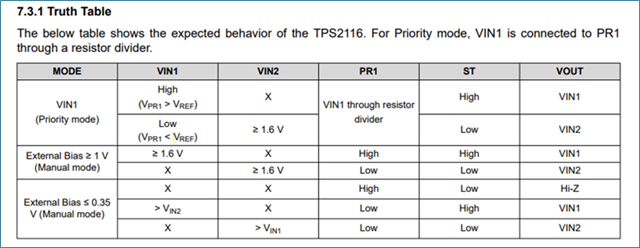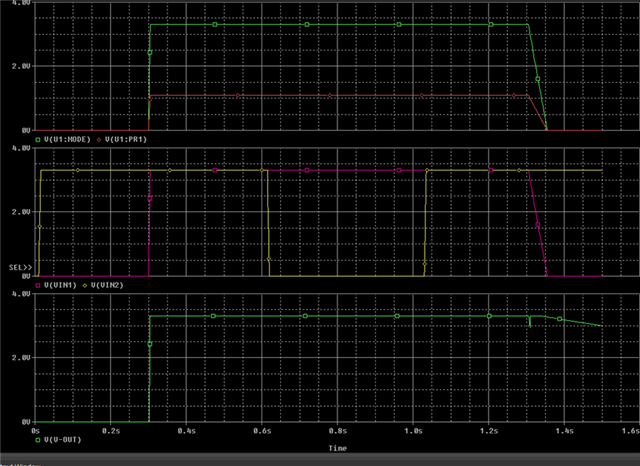Tool/software:
Hi,
I’m trying to implement an automatic voltage switchover circuit using the TPS2116 and I don’t seem to be getting the behavior I’m expecting.
Very briefly, I’ve got two independent 3.3V supplies (let’s call them VIN1 and VIN2 to be consistent with the nomenclature oft eh TPS2116) from which I need to generate an internal supply for a microcontroller.
When present, I would like to use VIN1 (this is my primary supply). The resulting output (VOUT) should be generated when EITHER of the 2 supplies is present, and, once present, should remain stable as long as either of the 2 supplies remains present.
According to the device datasheet for the TPS216, the functionality is as follows:

The following is my circuit (along with the define stimuli for VIN1 and VIN2):

However, the simulation does not seem to correspond to the truth table shown above:

According to the truth table, if the MODE pin is connected to VIN1 (it is) AND Vpr1 is lower than Vref (1.0V) AND VIN2 is greater than 1.6V, VOUT should be driven by VIN2.
These conditions are met by the simulation waveform from approx. 0.02s to 0.3s, yet VOUT remains 0V.
I have looked at these results in many ways and cannot understand what I am doing wrong.
Am I interpreting the truth table correctly? Why is the simulation not behaving as expected?
Thanks,
Steve



